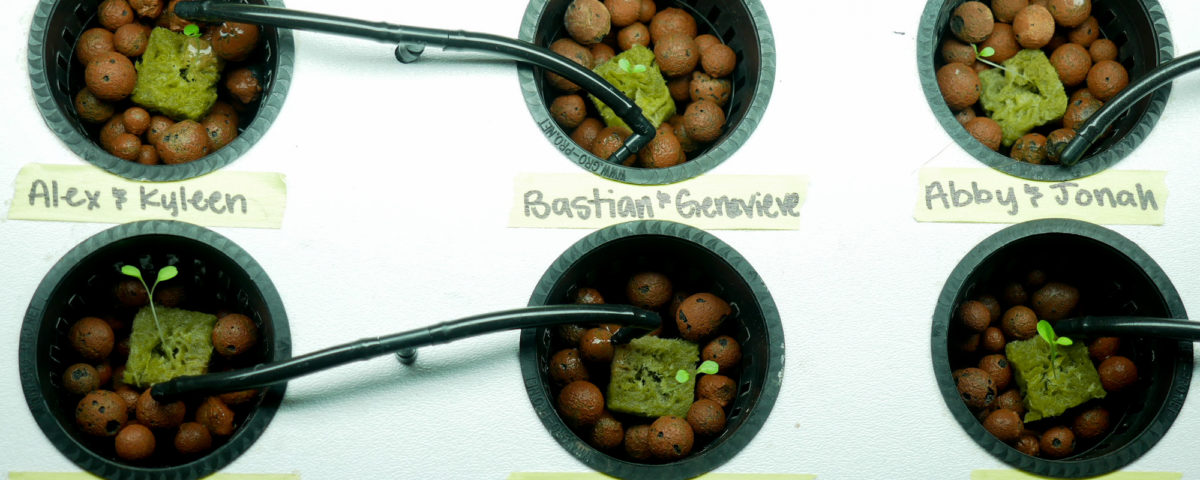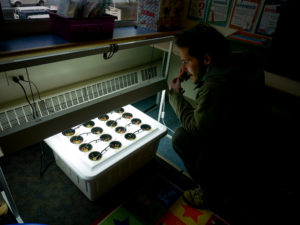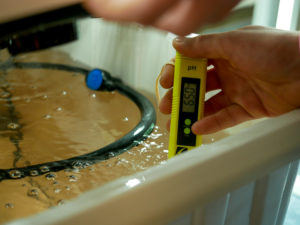Hydroponics In Our Schools

New Discovery Room theme connects second grade students to their food
By Teal Barmore, December 5, 2019
Second grade students at Mt. Eccles Elementary shifted in their seats with wonder and excitement when AmeriCorps educator Chris Iannazzone and his colleagues from the Prince William Sound Science Center’s education department introduced them to the concept of growing plants without soil. Drawing on their previous week’s lesson on the life cycle of plants and what plants need to survive, Chris explained how plants in a hydroponics system can photosynthesize with artificial light and be fed the nutrients they need to survive through liquid nutrients added to their water. Best yet, with specialized equipment the size of a large Rubbermaid tote, they will  get to grow 16 heads of lettuce right in the school! For the rest of the year, Science Center educators will routinely visit the school to help the students grow plants with hydroponics and bring more plant-themed curriculum into the classroom.
get to grow 16 heads of lettuce right in the school! For the rest of the year, Science Center educators will routinely visit the school to help the students grow plants with hydroponics and bring more plant-themed curriculum into the classroom.
‘Plants and Hydroponics’ for second graders is a new theme in the Science Center’s in-school Discovery Room science education program. The theme was inspired by their mission of resilience in a changing world and Chris’ experience working on farms before he moved to Cordova. “When I first moved here,” Chris recalls, “I remember going to the grocery store for the first time and thinking ‘Whoa, where are the fresh greens!’” Chris immediately started thinking about how he could change that. After chatting with some of the local residents about the challenges of growing food in Cordova, he decided that hydroponics was the way to do it, and what better place than in the elementary school.

The hydroponics setup takes up little space and is affordable to run. Between the air pump, water pump, and LED light, the total cost in electricity is $9.27/month in Cordova.
With a grant from his AmeriCorps sponsor, Rural Alaska Community Action Program (RurAL CAP), Chris purchased everything he needed to get a small hydroponics kit up and running. Although there are several different hydroponics systems, Chris chose an easy-to-use deep-water culture (DWC) hydroponics system for the second-grade class. He found a ready-to-use kit complete with an LED light, water pump, and aerator (to provide oxygen to the roots). The plants are suspended above a water tank in plastic mesh trays filled with clay stones and a small cube of rockwool, where the seed is planted. The second graders are responsible for checking and recording the pH of the water daily. PWSSC educators add liquid pH adjuster as needed and brightly colored liquid nutrients weekly.
Chris is excited about the potential to talk to students about the role of plants in the ecosystem as well. They are important for more than just eating, they sequester carbon and release oxygen, ‘the lungs of our earth’ as Chris likes to call them. By the end of the school year Chris hopes the students will have a better understanding of plants as well as a connection to the food they had the opportunity to grow and eat.



To stay up to date on our latest research findings, education programs and other news sign up for our newsletter at the bottom of the page and follow us on social media.




